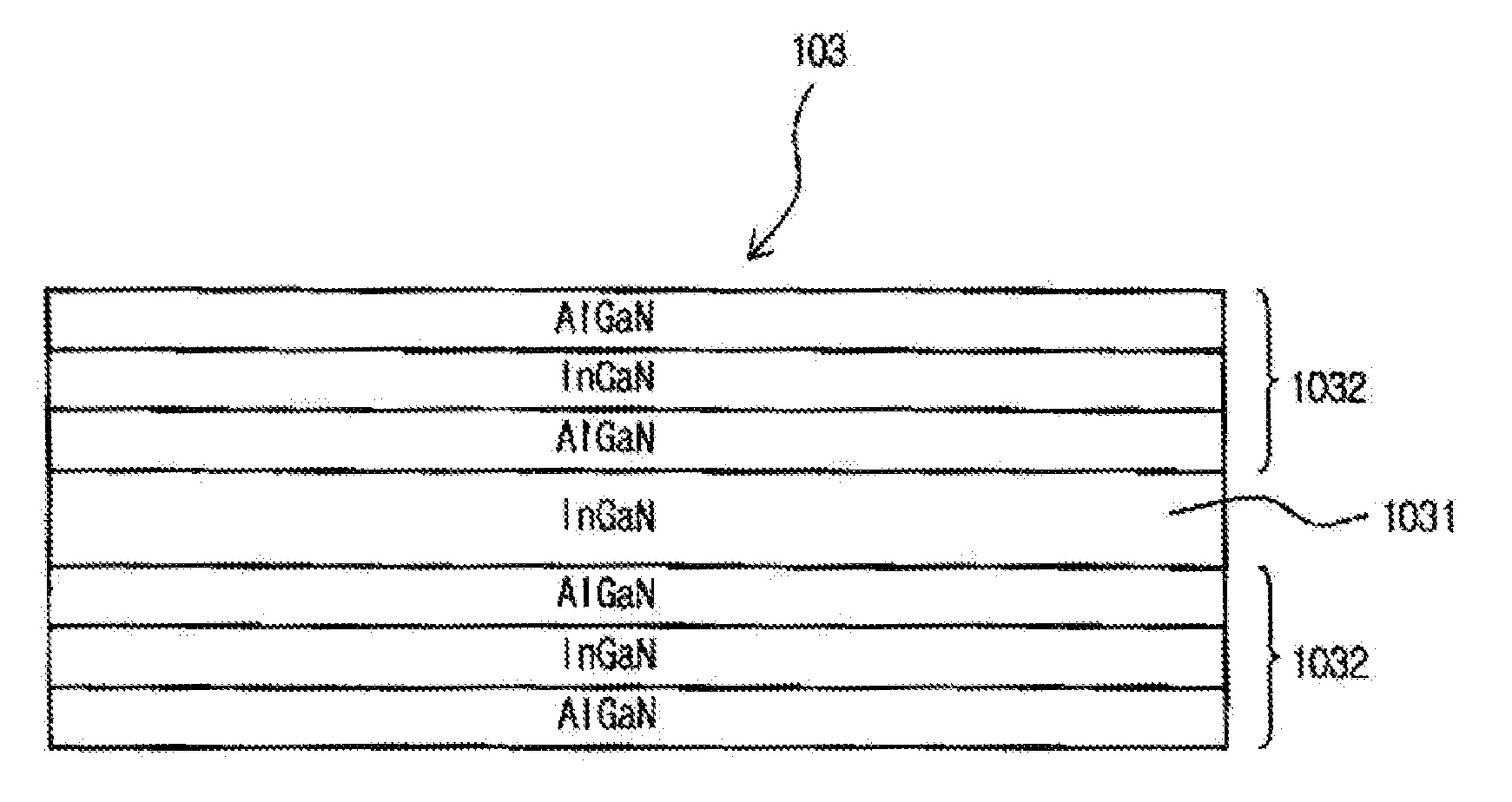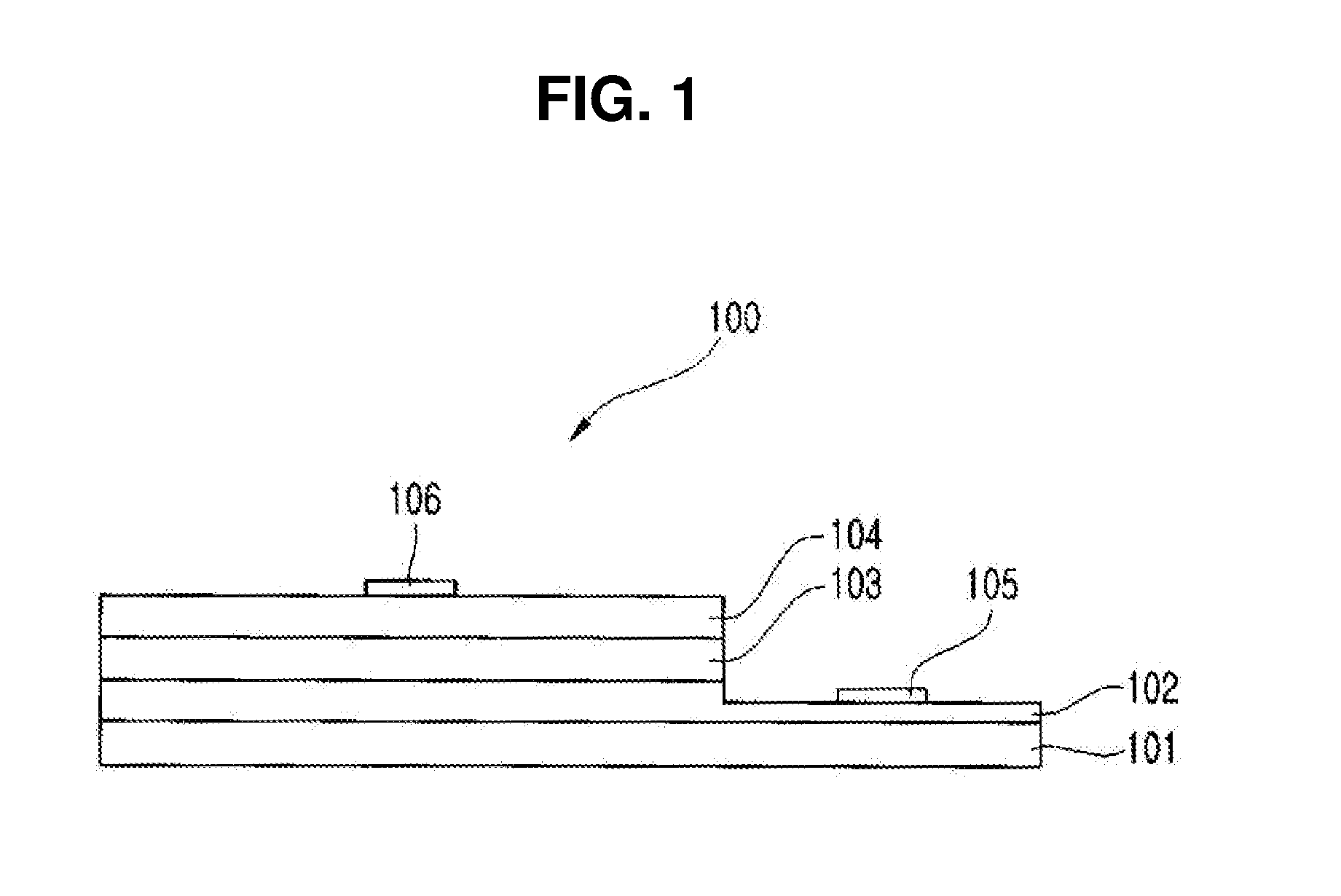Semiconductor Light Emitting Device
a technology of semiconductors and light-emitting devices, which is applied in the direction of semiconductor devices, electrical devices, nanotechnology, etc., can solve the problems of difficult to obtain as good device characteristics as expected, complicate the manufacturing process, and cannot be fundamentally solved
- Summary
- Abstract
- Description
- Claims
- Application Information
AI Technical Summary
Benefits of technology
Problems solved by technology
Method used
Image
Examples
Embodiment Construction
[0019]The present disclosure will now be described in detail with reference to the accompanying drawings.
[0020]FIG. 1 is a schematic sectional view of a semiconductor light-emitting device according to an exemplary embodiment of the present invention, and FIG. 2 is a sectional view of a light-emitting layer shown in FIG. 1.
[0021]Referring to FIGS. 1 and 2, the semiconductor light-emitting device 100 according to the exemplary embodiment of the present invention includes an N-type contact layer 102, a light-emitting layer 103, and a P-type contact layer 104.
[0022]The N-type contact layer 102 may be formed on a substrate 101. For example, the substrate 101 may be an Al2O3 substrate or an SIC substrate. Optionally, a buffer layer (not shown) may be further formed between the substrate 101 and the N-type contact layer 102. The buffer layer is provided for facilitating the high-quality nitride crystal growth.
[0023]For example, the N-type contact layer 102 may be provided as one or more n...
PUM
 Login to View More
Login to View More Abstract
Description
Claims
Application Information
 Login to View More
Login to View More - R&D
- Intellectual Property
- Life Sciences
- Materials
- Tech Scout
- Unparalleled Data Quality
- Higher Quality Content
- 60% Fewer Hallucinations
Browse by: Latest US Patents, China's latest patents, Technical Efficacy Thesaurus, Application Domain, Technology Topic, Popular Technical Reports.
© 2025 PatSnap. All rights reserved.Legal|Privacy policy|Modern Slavery Act Transparency Statement|Sitemap|About US| Contact US: help@patsnap.com



